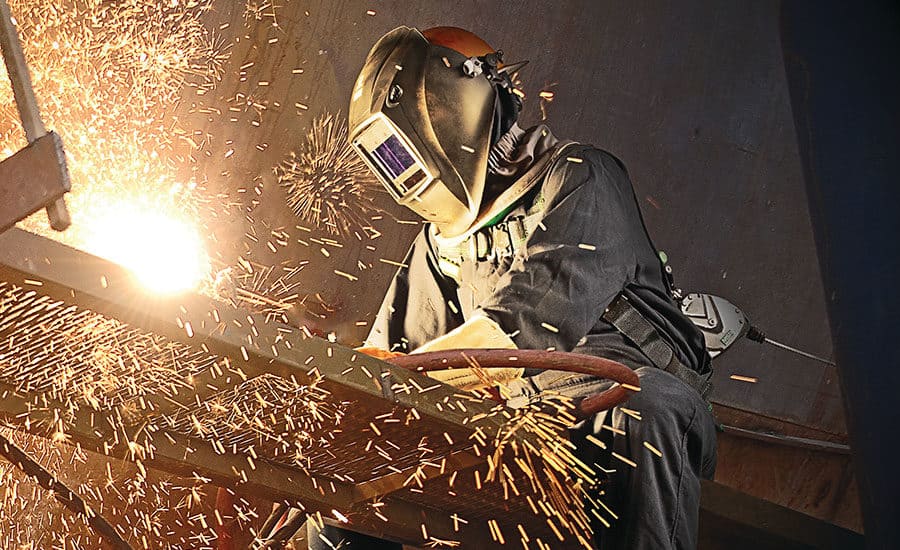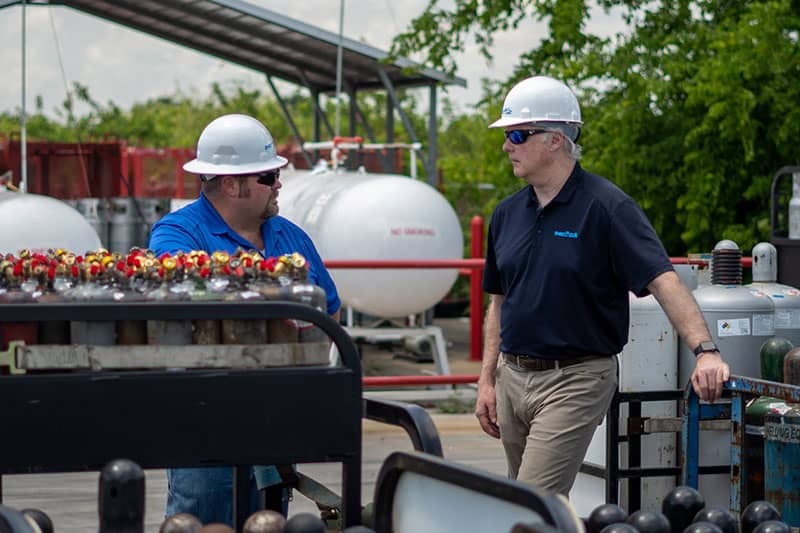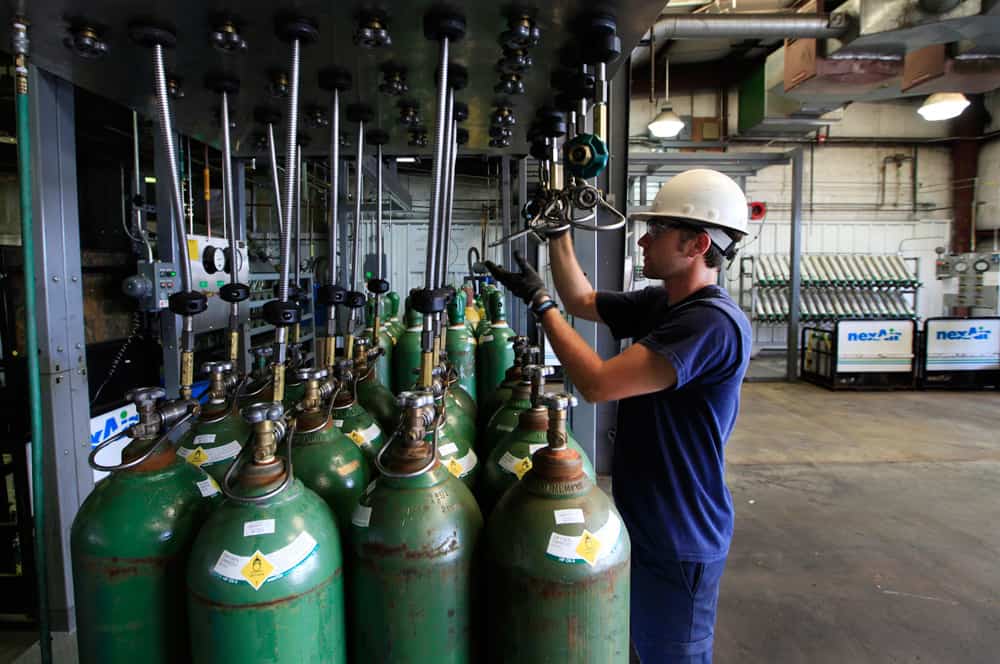Cross-Industry Gas Comparisons: Argon in Welding vs. Laboratory Use
Argon shows up everywhere, but it behaves differently depending on what you’re asking it to do. A welder uses argon to shield molten metal from contamination, while a laboratory technician might use the same gas to create an inert atmosphere for sensitive chemical reactions. Same gas, completely different requirements and expectations.
The purity levels tell the story. Welding argon might contain 99.99% pure argon, which works perfectly for most fabrication jobs. Laboratory argon often needs 99.999% purity or higher because trace contaminants that won’t affect a weld joint can completely ruin an analytical procedure.
Welding Applications and Requirements
Welding argon creates a protective bubble around the arc that prevents oxygen and nitrogen from contaminating the weld pool. The gas doesn’t participate in the welding process – it just keeps other gases away from the hot metal. Flow rates typically range from 15 to 25 cubic feet per hour, depending on the welding technique and environmental conditions.
Moisture content matters in welding applications, but the tolerances are relatively forgiving. A few parts per million of water vapor won’t usually affect weld quality, though it might create minor porosity in aluminum welding. Most welding operations can handle standard commercial-grade argon without problems.
Delivery systems for welding focus on consistent flow control and pressure regulation. Welders need steady gas delivery throughout long welding sequences, but they don’t typically require the ultra-clean delivery systems that laboratories demand.
Laboratory Applications and Standards
Laboratory argon serves multiple purposes depending on the application. Gas chromatography uses argon as a carrier gas that must be completely inert and free from contaminants that could interfere with analytical results. Spectroscopy applications need argon with extremely low levels of hydrogen, oxygen, and hydrocarbon impurities.
Sample preparation often requires argon atmospheres to prevent oxidation of sensitive compounds. Research laboratories working with reactive materials create argon-filled glove boxes where scientists can handle air-sensitive chemicals safely. These applications demand consistent purity throughout the entire gas delivery system.
Analytical instruments are sensitive to pressure fluctuations and flow variations that welding equipment would never notice. Laboratory gas delivery systems include pressure regulators, flow controllers, and purification systems designed to maintain stable conditions for precise measurements.
Purity Standards and Testing
Welding argon undergoes basic purity testing that verifies the gas meets commercial specifications. This typically includes checking for moisture, oxygen, and nitrogen content at levels measured in parts per million. Quality control focuses on ensuring the gas will perform adequately for typical welding applications.
Laboratory argon requires more extensive analysis that might test for dozens of potential contaminants at parts-per-billion levels. Trace metals, hydrocarbons, and noble gas impurities that don’t affect welding can interfere with sensitive analytical procedures. Certificates of analysis for laboratory argon often run multiple pages with detailed contamination data.
Cost and Supply Considerations
Welding argon costs significantly less than laboratory grades because the purification requirements are less stringent. High-volume welding operations can use bulk supply systems that provide cost-effective gas delivery for continuous production work.
Laboratory argon costs more to produce and distribute because of the additional purification steps and specialized handling requirements. Small research laboratories often purchase cylinder quantities of ultra-high purity argon even though the per-unit costs are higher than bulk supply.
Supply reliability becomes important for both applications, but for different reasons. Welding operations need consistent delivery to maintain production schedules, while laboratories need guaranteed purity levels to ensure research results remain valid.
Understanding these application differences helps facilities choose appropriate argon grades and supply systems. nexAir’s expert KnowHow™ covers both welding and laboratory argon applications, helping customers select the right gas specifications for their specific needs.
Operations that match argon grades to their actual requirements Forge Forward with optimized performance and cost control. Contact nexAir to discuss argon solutions that meet your welding or laboratory application requirements.
Don't see what you're looking for?
Everything we offer is a click away and it will arrive before you know it.




